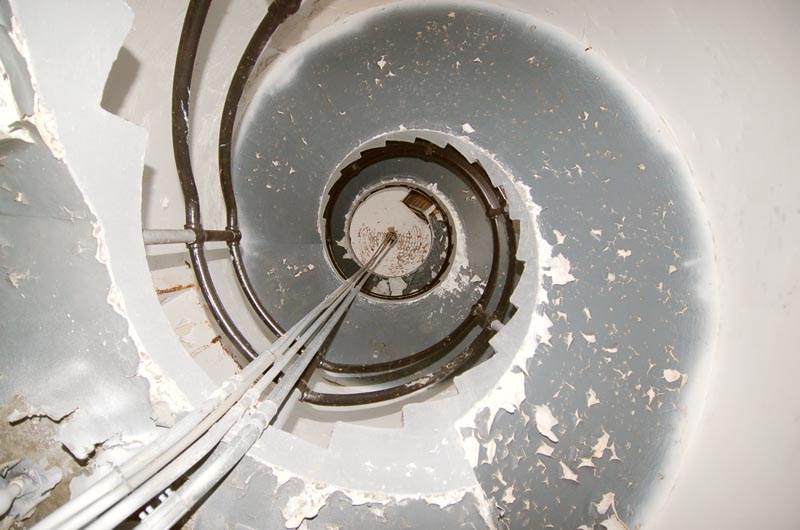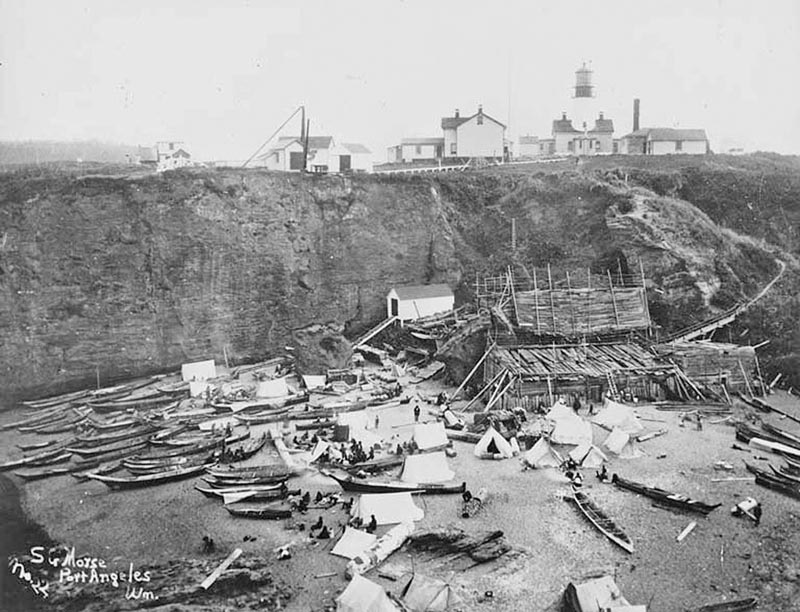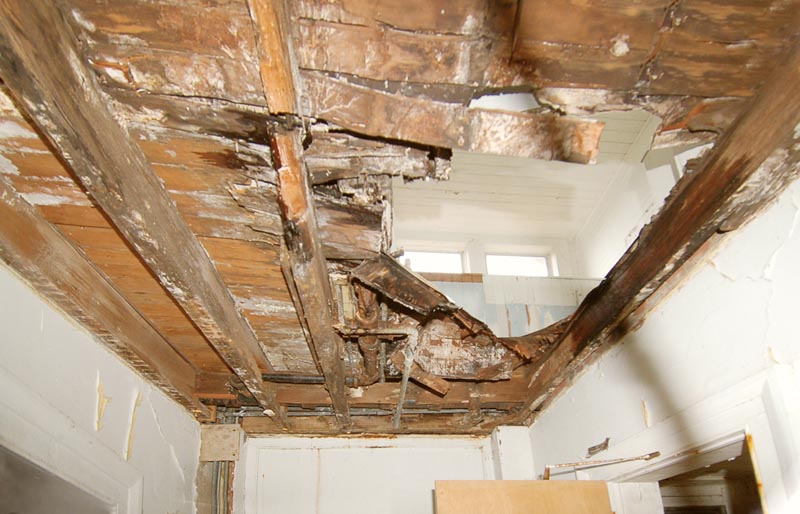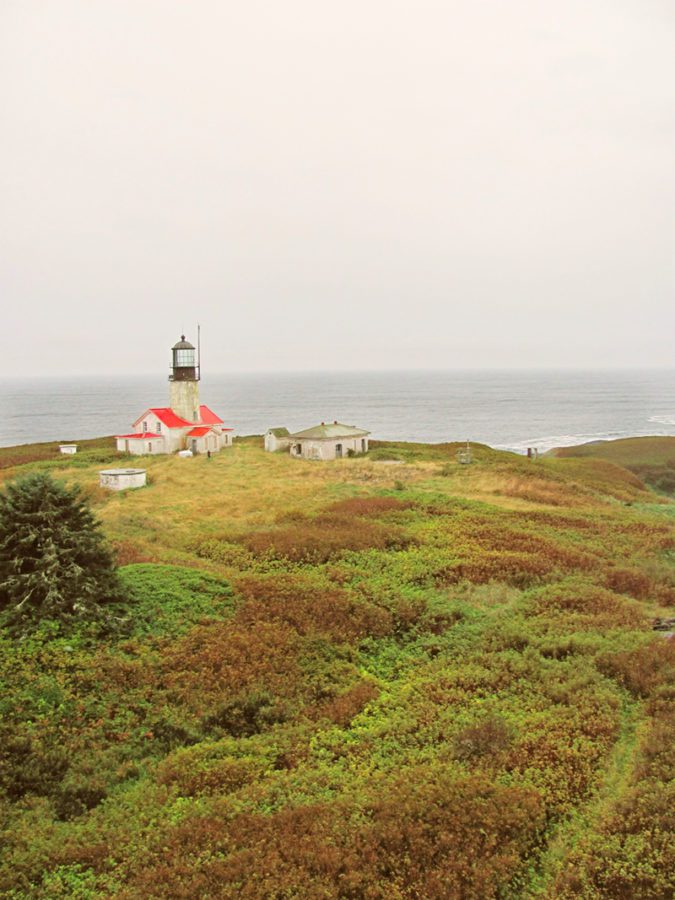Donor Focus: Swenson Say Fagét structural engineers

Deteriorated conditions on the interior of the Cape Flattery Lighthouse. Photo from Swenson Say Fagét.
By R. Gregory Coons, PE, Principal, Swenson Say Fagét
For over 160 years, the lighthouse at Cape Flattery has guarded the entrance to the Strait of Juan de Fuca, guiding vessels from sailing ships to super tankers through strong tides and dangerous rocks around the most northwesterly point in the lower 48 States into Puget Sound. The Lighthouse is located on Tatoosh Island, within the Makah Indian Reservation, and was used for millennia as a seasonal village site for fishing and whaling. In 1854, Congress set aside funds for construction of a series of West Coast lighthouses, including the Cape Flattery Lighthouse. Construction occurred over the next few years, and the Cape Flattery Lighthouse was manned and lit for the first time in 1857. The U.S. Lighthouse Service, followed by the U.S. Coast Guard, maintained and operated the lighthouse until 2008 when it was decommissioned, its functions replaced with a mast holding automated beacons.

A Makah potlatch gathering on Tatoosh Island in 1895, photographed by Samuel G. Morse. Photo from University of Washington Libraries.
Cape Flattery Lighthouse is a Cape Cod style lighthouse, with an 80-foot tower occupying the north half of 30×40-foot keeper’s dwelling. The tower is stone and brick masonry construction to about 52 feet, with an iron watch room and lantern above. The iron section of the tower is constructed of sixteen iron plates fastened to an equal number of iron ribs at the watch room level, which extend through the iron lantern room floor to form the frame for the lighthouse’s glass. The tower’s roof is copper and is supported by an iron frame springing from the vertical iron ribs below. The tower is accessed by a reinforced concrete stair, which was built in the early 1930s. The keeper’s dwelling is constructed of stone exterior walls, brick interior walls, and old growth lumber floors and roof. The dwelling was expanded around 1899 with one-story additions to the east, west, and to the north.
Swenson Say Fagét (SSF) structural engineers and Cardinal Architecture were hired by the National Trust for Historic Preservation, working for the Makah Tribe, to assess the structural integrity of the lighthouse and associated fog signal building. Due to the extreme weather conditions at the Cape and lack of maintenance over several decades, both the lighthouse and fog signal building have suffered significant water damage. At the lighthouse, water infiltration through the south dormer has caused significant wood decay resulting in a collapse of the second floor over the original entry hall. The second floor bedrooms of the keeper’s quarters are also in danger of collapse. As a temporary measure, SSF and Cardinal Architects recommended emergency shoring and basic envelope repair to prevent further collapse. Long-term repair would include replacement of the decayed structure, cleaning and painting of the cast iron tower, permanent envelope repair, and new mechanical systems for basic lighting, heating, and power.

Floor collapse at the Cape Flattery Lighthouse. Photo from Swenson Say Fagét.
Unfortunately, there is currently no source of money for the U.S. Coast Guard to undertake necessary repairs. The National Trust for Historic Preservation announced the lighthouse as one of their National Treasures last year, and the Makah are working on a preservation plan for the long-term use of the lighthouse with funding from the National Park Service and the National Trust. We encourage readers to visit the National Trust’s website and sign the petition to fund repairs to the lighthouse, and also to visit Neah Bay and to take the short hike down the Cape Flattery Trail to view the lighthouse.
References:
National Trust
Makah Tribe
HistoryLink.org
SSF project page

The Cape Flattery Lighthouse station on Tatoosh Island. Photo from the National Trust for Historic Preservation.
